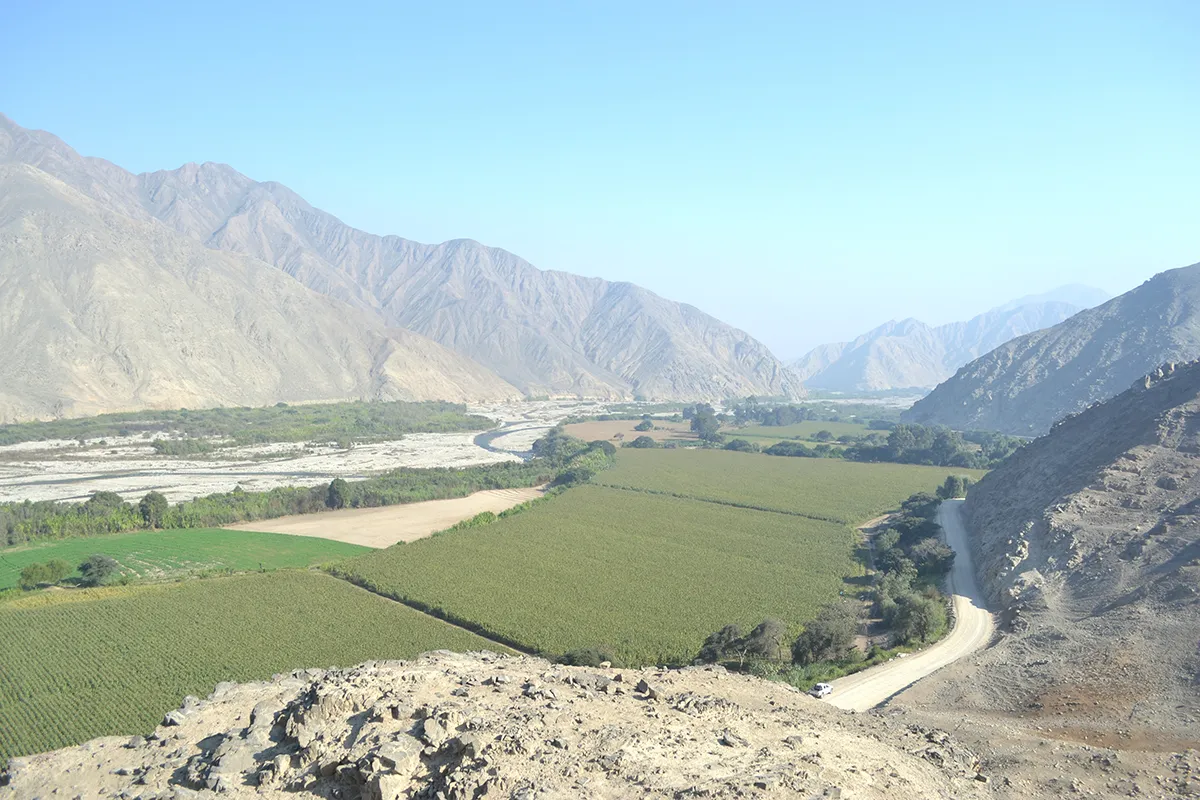Researchers working in Peru have unearthed 192 human spines that were ceremonially threaded onto posts made of reeds 500 years ago. The discovery, published in the journal Antiquity, highlights an Andean burial tradition that has only been found in this specific area of Western Peru, which is known as the Chincha Valley.
Teams of archeologists excavated 20 sites around the region, and found the spines in elaborate graves known as chullpas. The fact that these ‘vertebrae-on-posts’ were discovered at multiple sites may suggest this was a common and well-known practice, they say.
It is thought that the spines were reconstructed and held-together with reeds many years after death, possibly due to the graves being looted and damaged by European settlers. The dead being buried intact was an important part of the culture of the Chincha people, so their reconstruction and reinterment would have been highly significant.
This coastal region was once the heartland of the Chincha Kingdom, but between 1533 and 1583 its population declined massively due to epidemics, famines and the arrival of foreign invaders.
Unearthing the posts
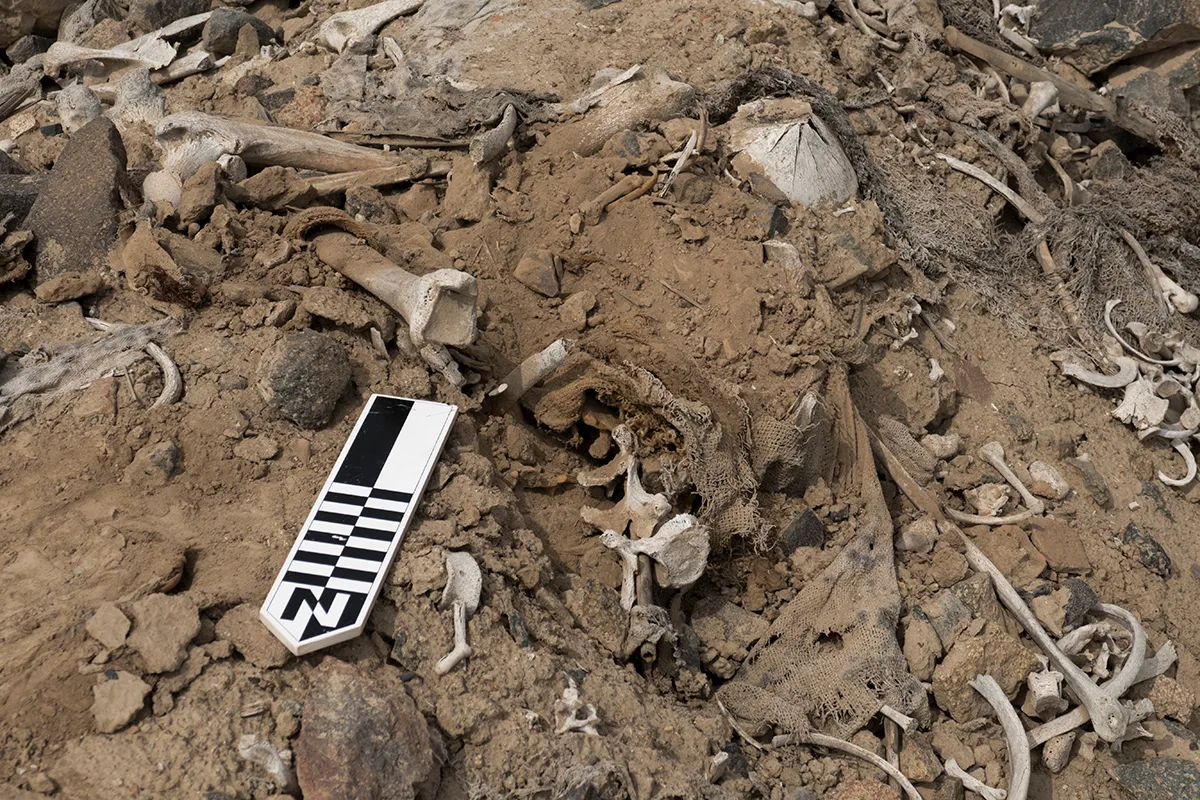
Craniums at the dig site
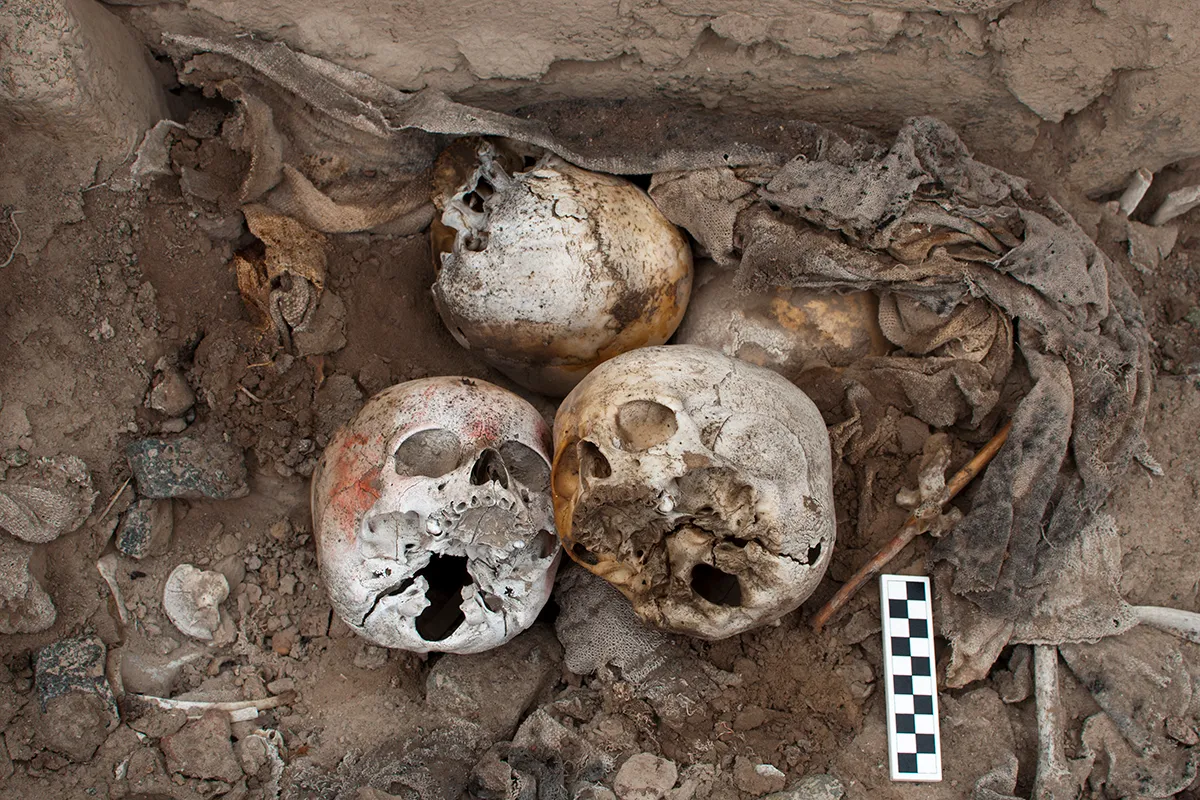
Vertebrae-on-posts
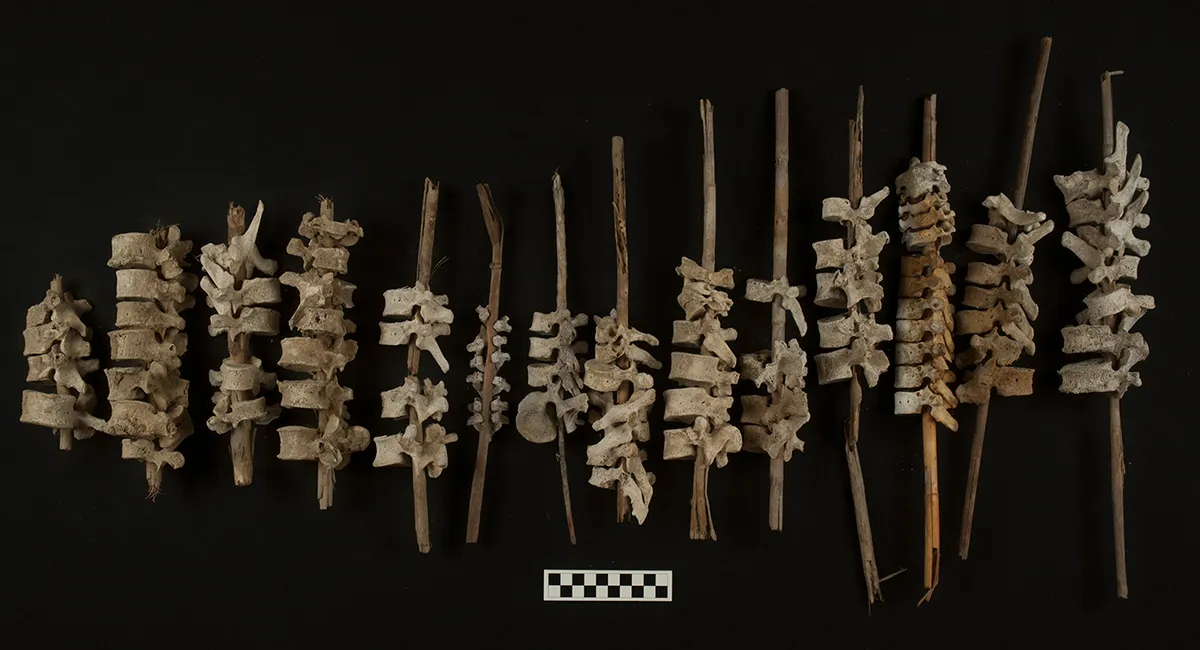
Graves filled with bones

Cranium and spine
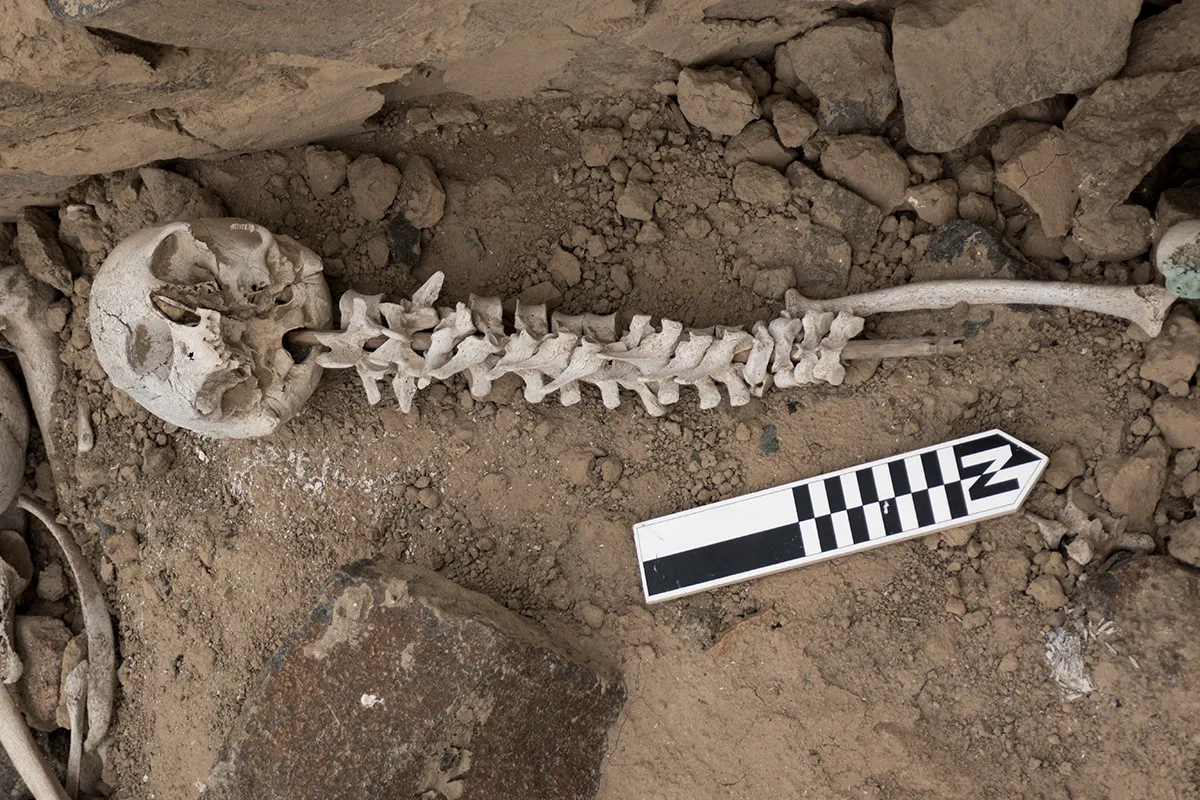
See more images on Science Focus:
- Studying the hottest place on Earth
- Science images of the month January 2022
- Howling at the full Wolf Moon
Spine example
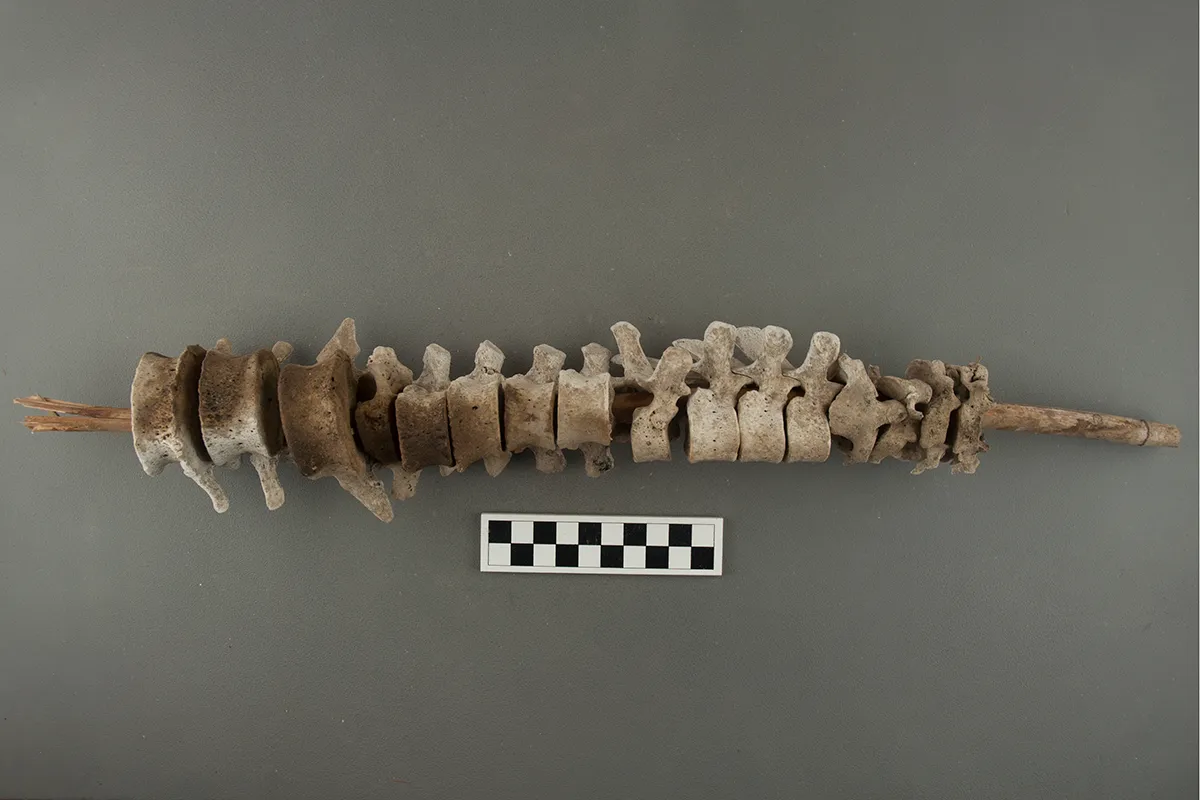
Human remains
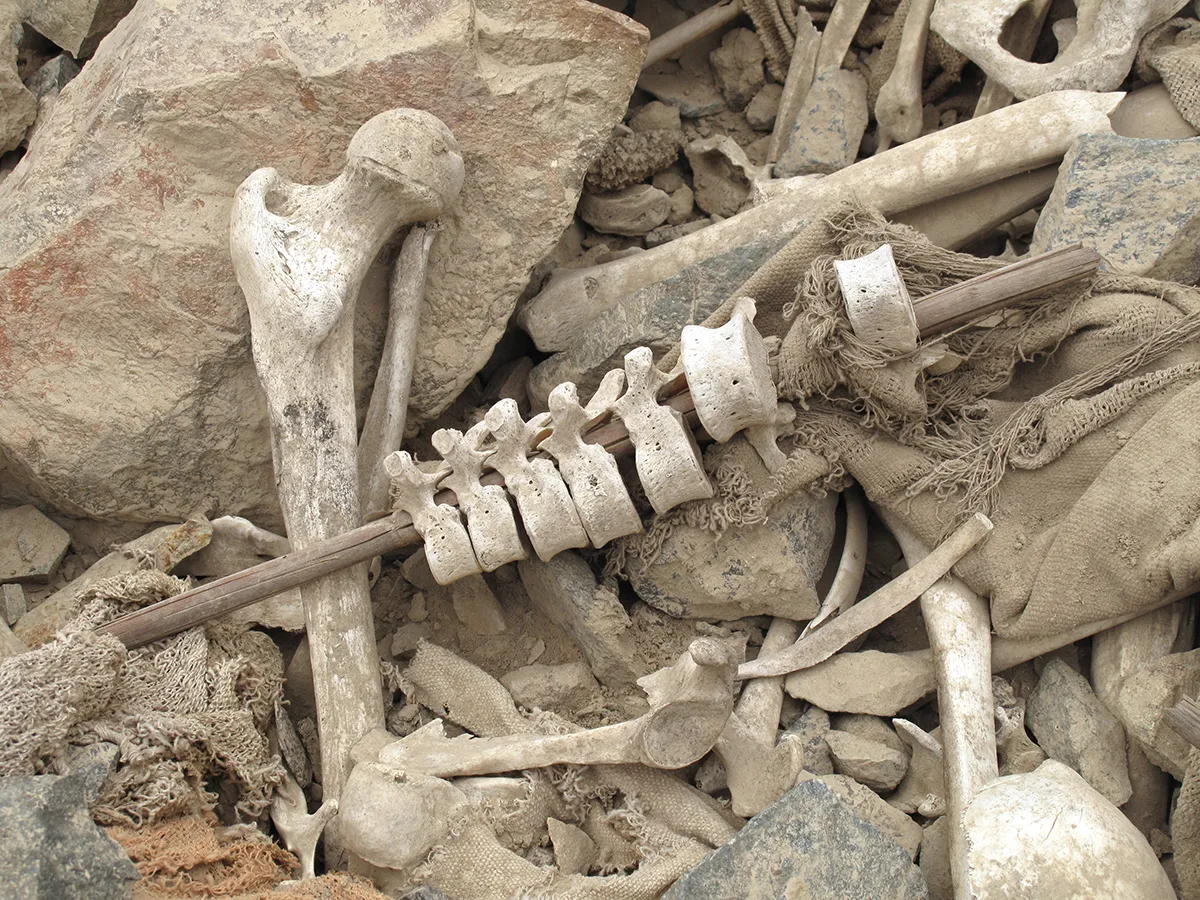
The Chincha Valley, Peru
